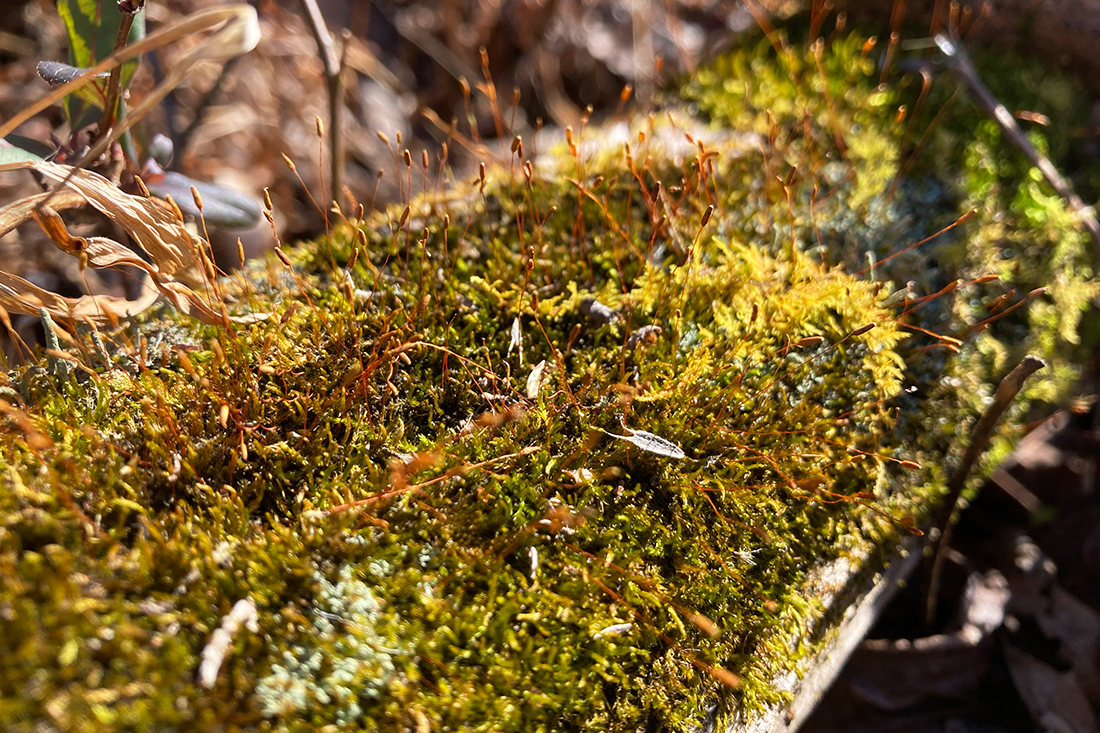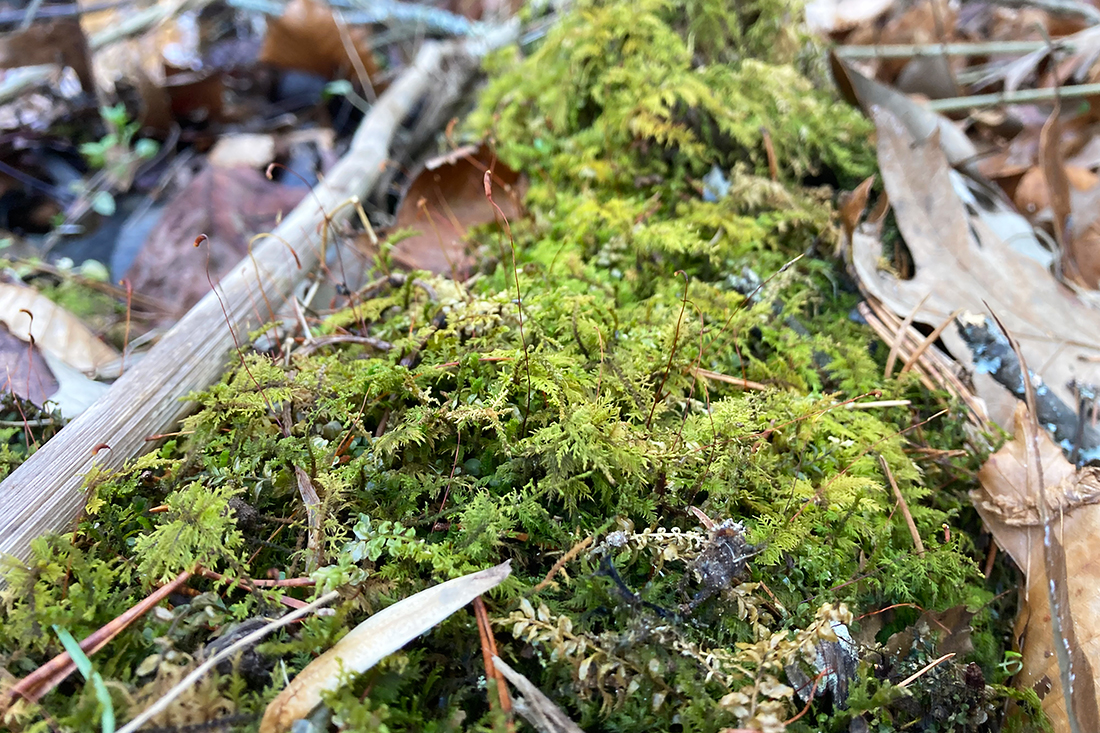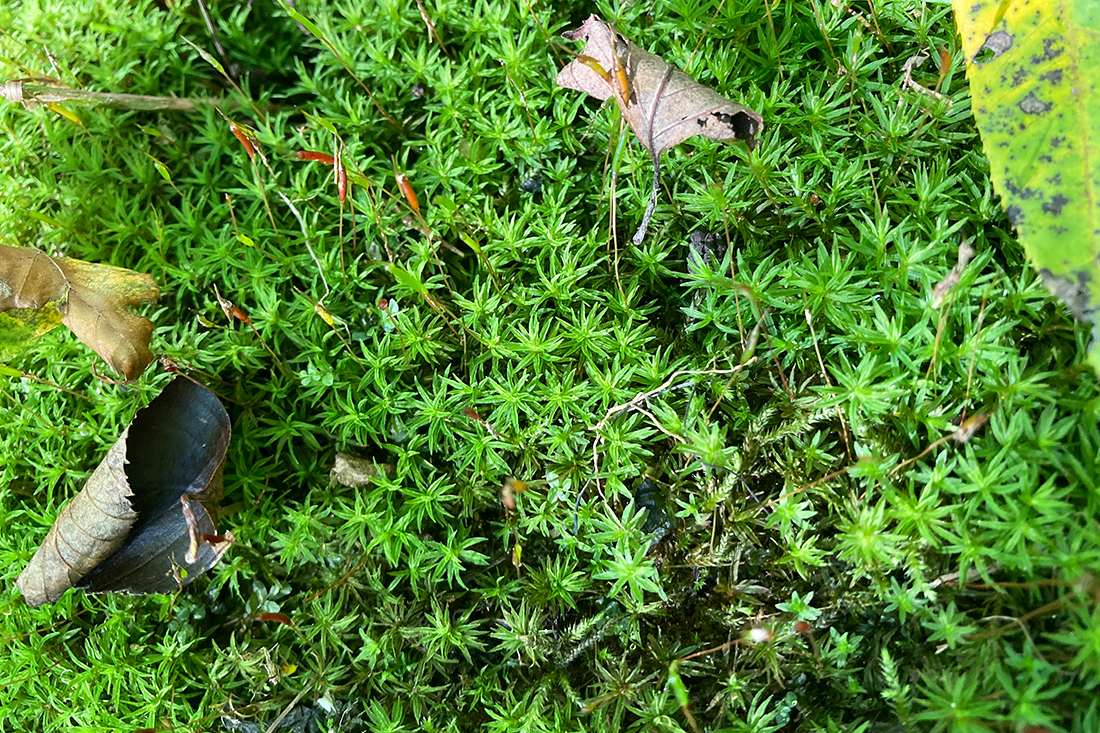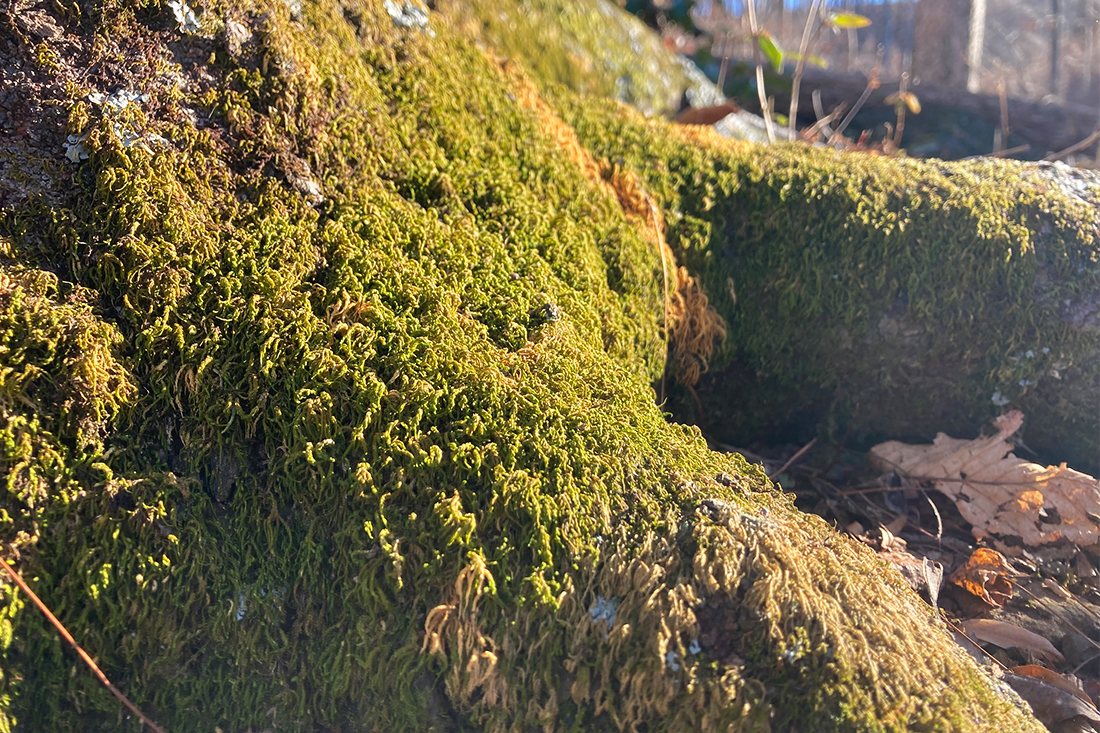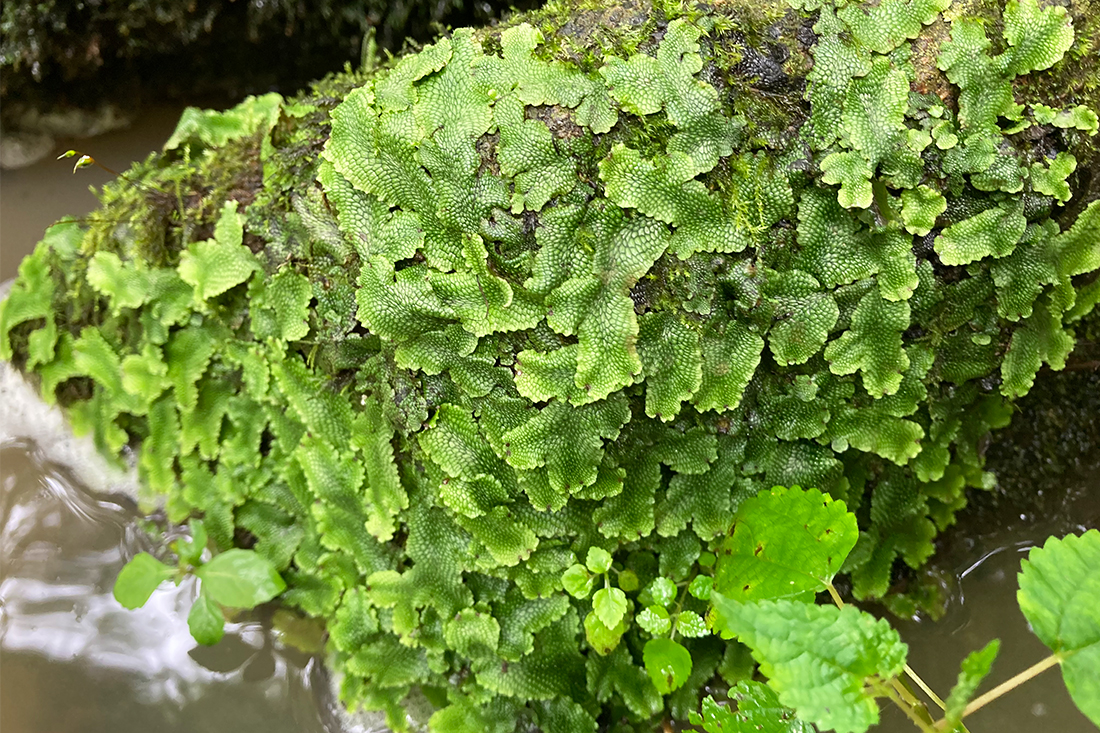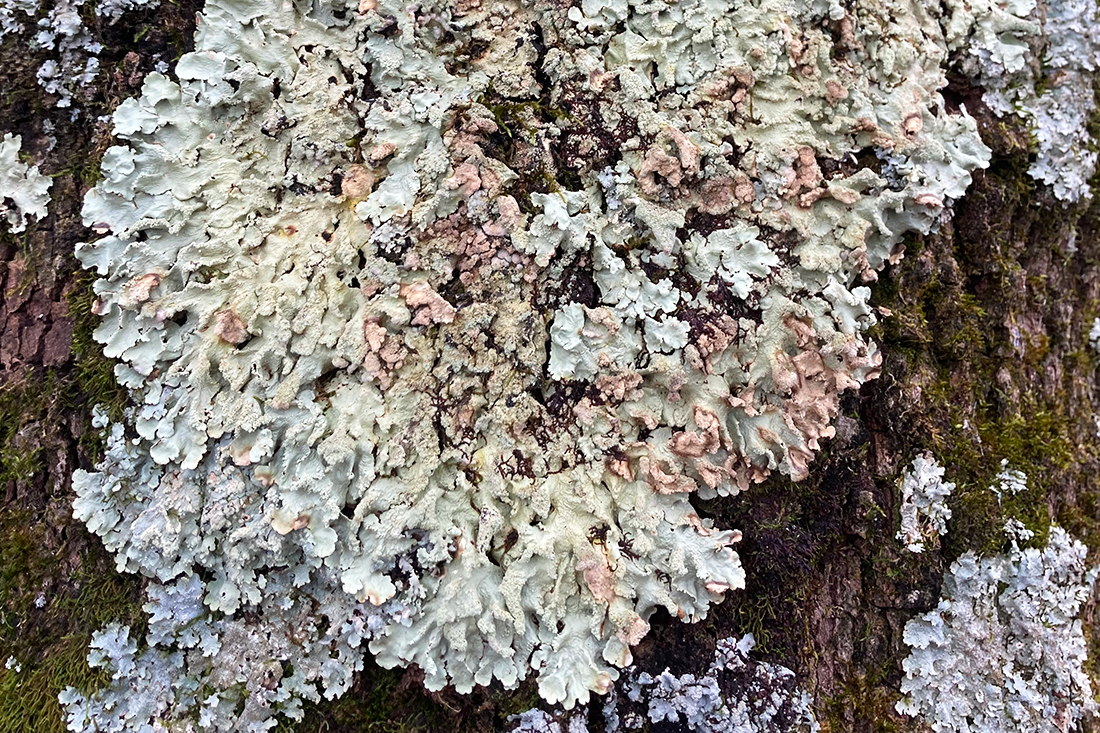Stewardship Corner | Mosses, Liverworts, and Lichen
From the Stewardship Corner | Mosses, Liverworts, and Lichen
An often-overshadowed part of the plant kingdom, mosses, liverworts, and hornworts, make up a small world of their own in ecological communities. Often found growing on stones, stumps, and moist shady corners, these organisms play a quiet but vital role in initiating soil formation, slowing water passage, and recycling nutrients. They also provide habitat for macroinvertebrates, and for them, a mossy mat might feel like a fully grown forest. Unlike other plants, these green fuzzy mats do not form vascular systems that can move nutrients and water throughout their bodies, they instead rely on water and nutrients to come to them. This is why you often find them growing in wet, damp, low lying areas where water and moisture can find them.
Like ferns – mosses, liverworts, and hornworts do not produce flowers or seeds, and instead reproduce through spores. Because of their simpler requirements, these plants can grow where nothing else can, and often act as a pioneer species setting the stage for ecological succession. Their spores can travel miles before landing and spread by the millions. They are also a great indicator of air quality due to their sensitive nature, a welcoming sign while on a walk in the woods.
Lichen is another great indicator of air quality, and although they might look similar and grow alongside their counterparts, lichen is a wholly different form of fascinating life. Lichen is the result of a mutualistic relationship between algae and fungi. While they are not a plant, they still perform photosynthesis as a composite organism. Small but mighty, these species are considered to be keystone species in many ecological communities. How many different species of mosses, liverworts, hornworts, and lichen have you come across recently?
Pictured from Wildlands project sites:
- Tortula Moss (Tortula muralis) – Honey Mill Mitigation Site, Surry County, NC
- Delicate Fern Moss (Thuidium delicatulum) – Key Mill Mitigation Site, Surry County, NC
- Star Moss (Syntrichia ruralis) – Alexander Farm Mitigation Site, Alexander County, NC
- Broom Forkmoss (Dicranum scoparium) – Honey Mill Mitigation Site, Surry County, NC
- Medusa Moss (Hedwigia ciliata) – Carpenter Bottom Mitigation Site, Gaston County, NC
- Great Scented Liverwort (Conocephalum conicum) – Carpenter Bottom Mitigation Site, Gaston County, NC
- Lichen (Parmeliaceae) – Lone Hickory Mitigation Site, Yadkin County, NC
📸 Photos by Dominic Dixon, Stewardship Associate | Charlotte, NC Office
#wildlandsengineering #stewardshipcorner #ecology #landstewardship #moss #nonvascular #habitatbuilding #environmentalscience #streamrestoration #wetlands #conservation #lichen #liverwort



